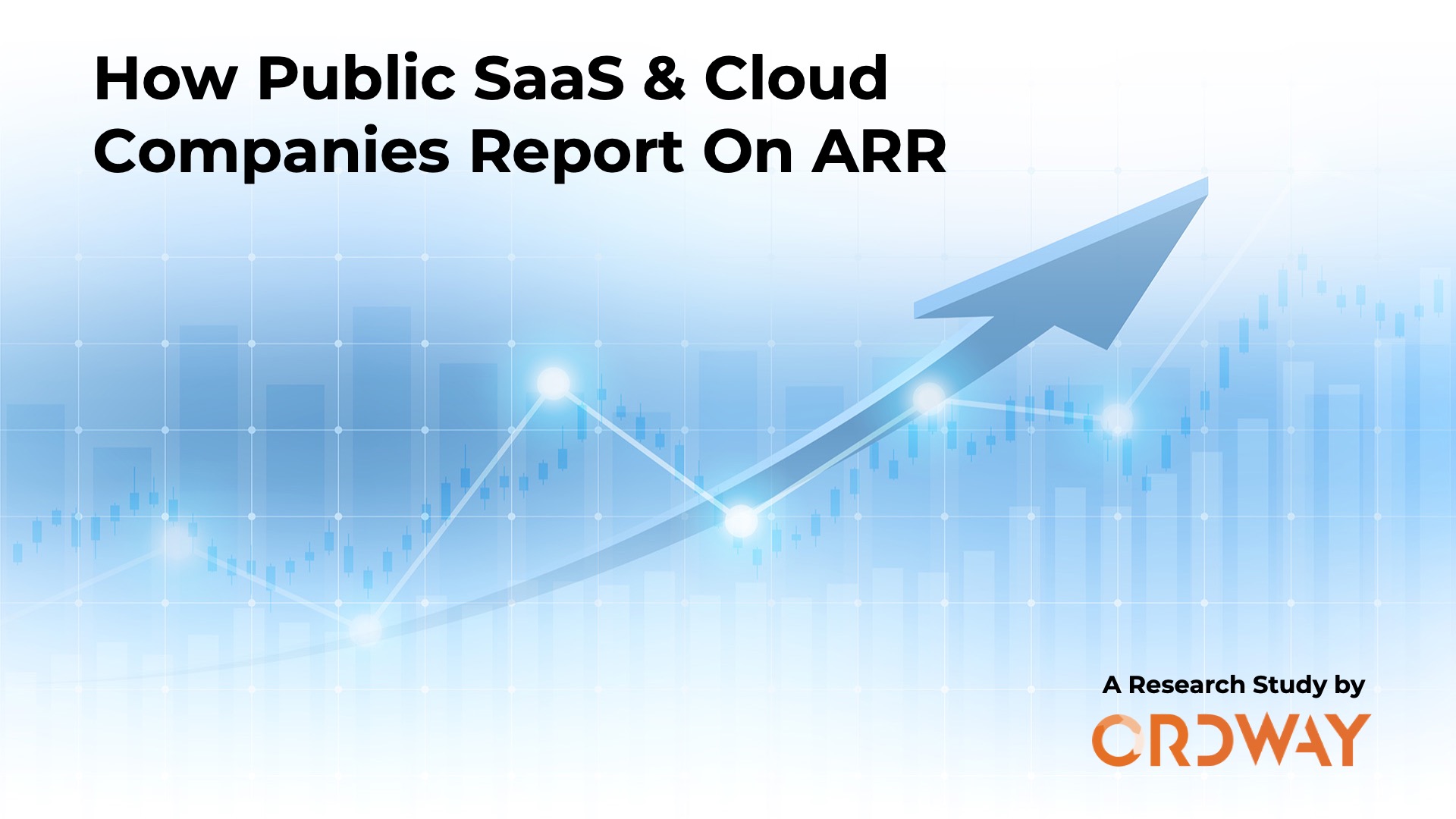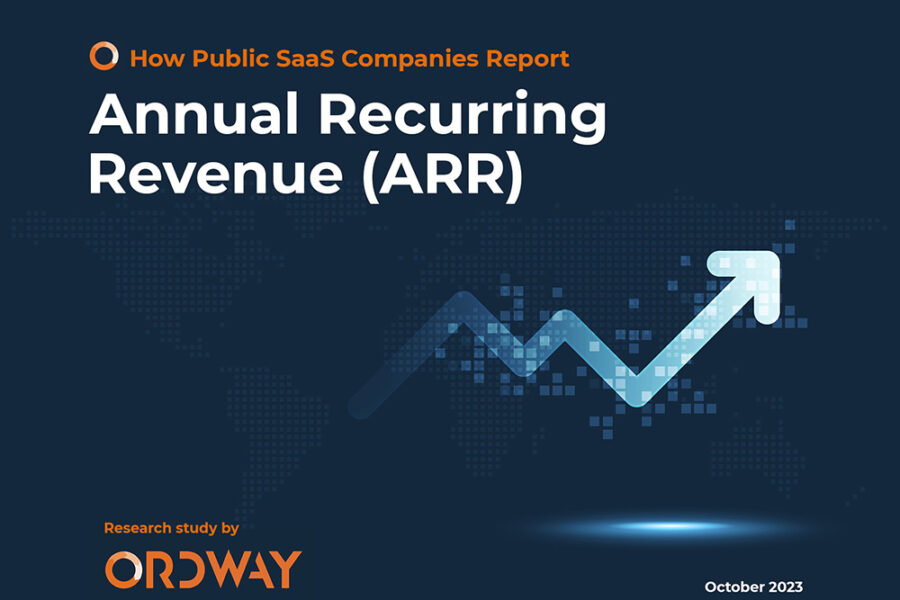Analysis of 125 SaaS and Cloud Providers Listed on US Markets
Note: There is an updated version of this report published in July 2023.
To arrive at an understanding of how publicly traded SaaS and cloud companies are calculating and reporting ARR (annual recurring revenue), Ordway conducted an analysis of financial disclosures from companies listed on US capital markets. In total, we reviewed the latest annual reports (e.g. SEC 10-K, 20-F filings) of approximately 125 actively listed SaaS, cloud, and fintech providers on the NYSE and NASDAQ.
Key Topics Covered:
How and why is ARR reported to investors?
- Reporting on ARR results
- Use in net retention and customer expansion metrics
How is ARR defined and calculated?
- Current monthly price x 12
- Total contract value/contract years
- Annualized GAAP revenue
When does ARR reporting start and end?
- Start at contract booking or implementation
- End at notice of cancellation or contract end date
Which revenue sources are included in ARR?
- Month-to-month, pay-as-you go accounts
- Variable fees from usage-based pricing
- Professional services engagement revenue
ARR complexity grows as SaaS and cloud providers scale up
In the early stages of a SaaS or cloud provider’s lifecycle, the calculation of ARR is relatively straightforward. Most seed round and Series A companies start with a single product and single pricing model. ARR is simply the monthly price customers are paying for the subscription component of the service multiplied by 12. However, as organizations grow from $1M to $100M and beyond the nature of ARR becomes more complex. On their journey towards IPO, most companies will make acquisitions, launch new product offerings, and add new distribution channels.
By the time a SaaS or cloud provider reaches $100M they may have over 100 different revenue-generating SKUs. The various products likely contain a mix of diverse pricing models ranging from one-time fees and short-term professional services engagements to fixed fee subscriptions and usage-based pricing arrangements. The customer contract portfolio grows more complex as well. A $100M SaaS or cloud provider likely may have thousands of smaller customers on monthly, pay-as-you-go plans and hundreds of larger accounts locked into longer-term, multi-year contracts.
View Slide Show of Results
Defining the approach to calculating ARR
To report on ARR, each SaaS and cloud provider needs to define an ARR policy that specifies 1) what is (and is not) included in “recurring revenue”, 2) how ARR reporting aligns with the customer contract lifecycle and 3) the methodology used to calculate the result. The ARR policy should be reviewed with senior management, independent auditors, and board directors to gain consensus. Once approved, it should be shared in investor communications to provide transparency as to how the business thinks about ARR, enabling shareholders and debtholders to perform comparative benchmarking against industry peers.
There are three common approaches to calculating ARR
There are three primary approaches that are used to calculate ARR. All three models rely on calculating a monthly run rate first, which is then annualized. In the first model, MRR is “assigned” to each customer, typically based upon the current monthly price in the contract. In the second model, an “average” monthly fee is calculated by dividing the Total Contract Value (TCV) by the number of contract months. In the third model, a monthly run-rate is computed based upon the company’s GAAP accounting for the prior month. Once the MRR or run-rate is determined, it is multiplied by 12 to arrive at ARR. With each of the three approaches, there can be several variations in how the formula is applied.




